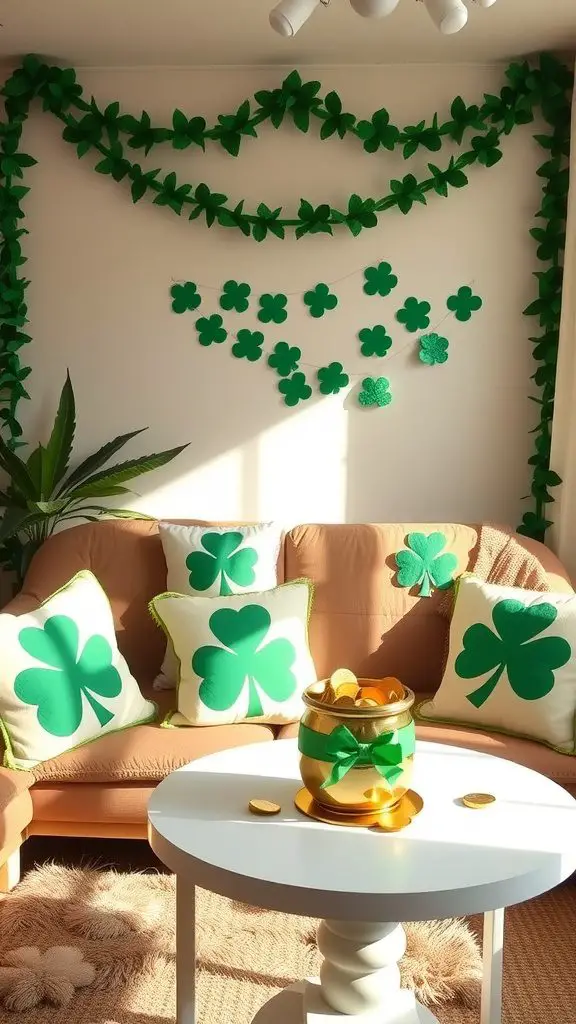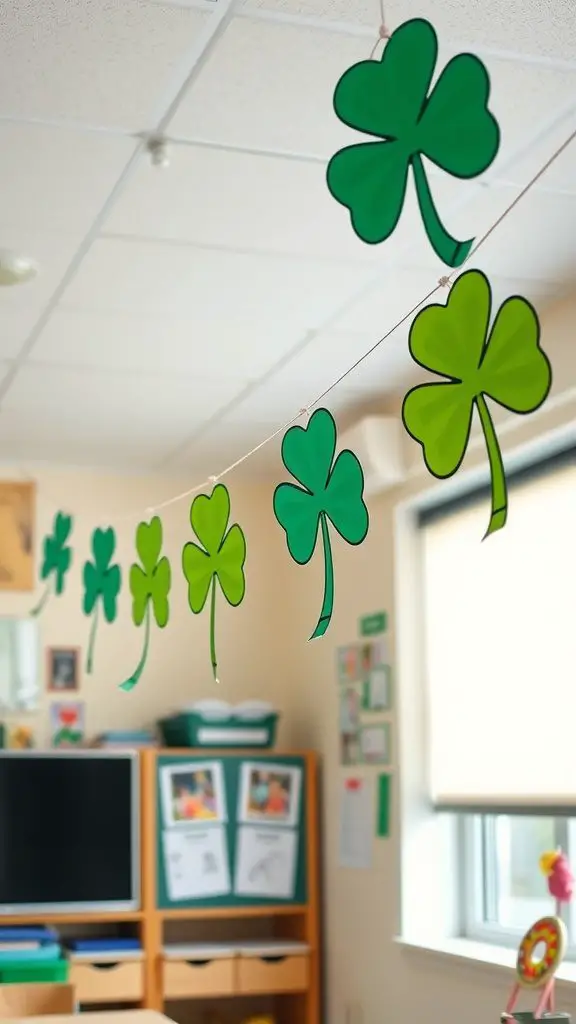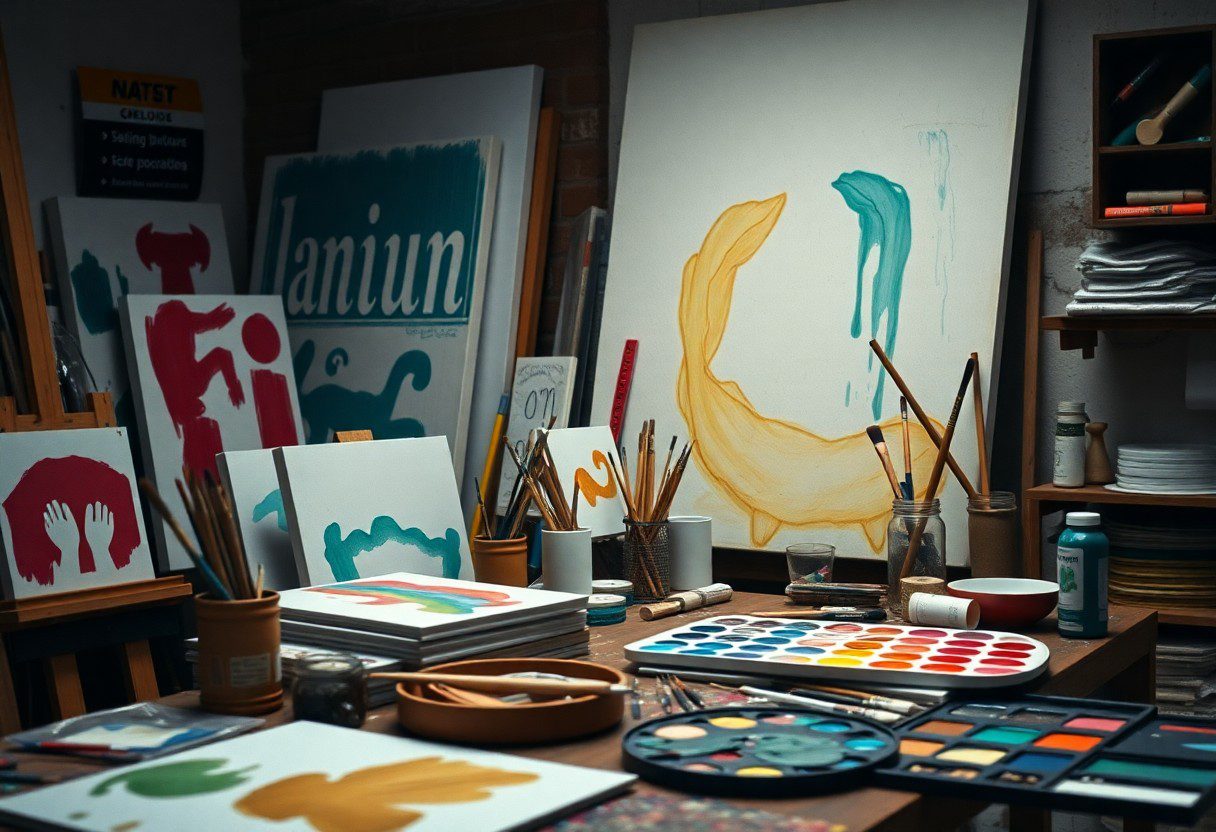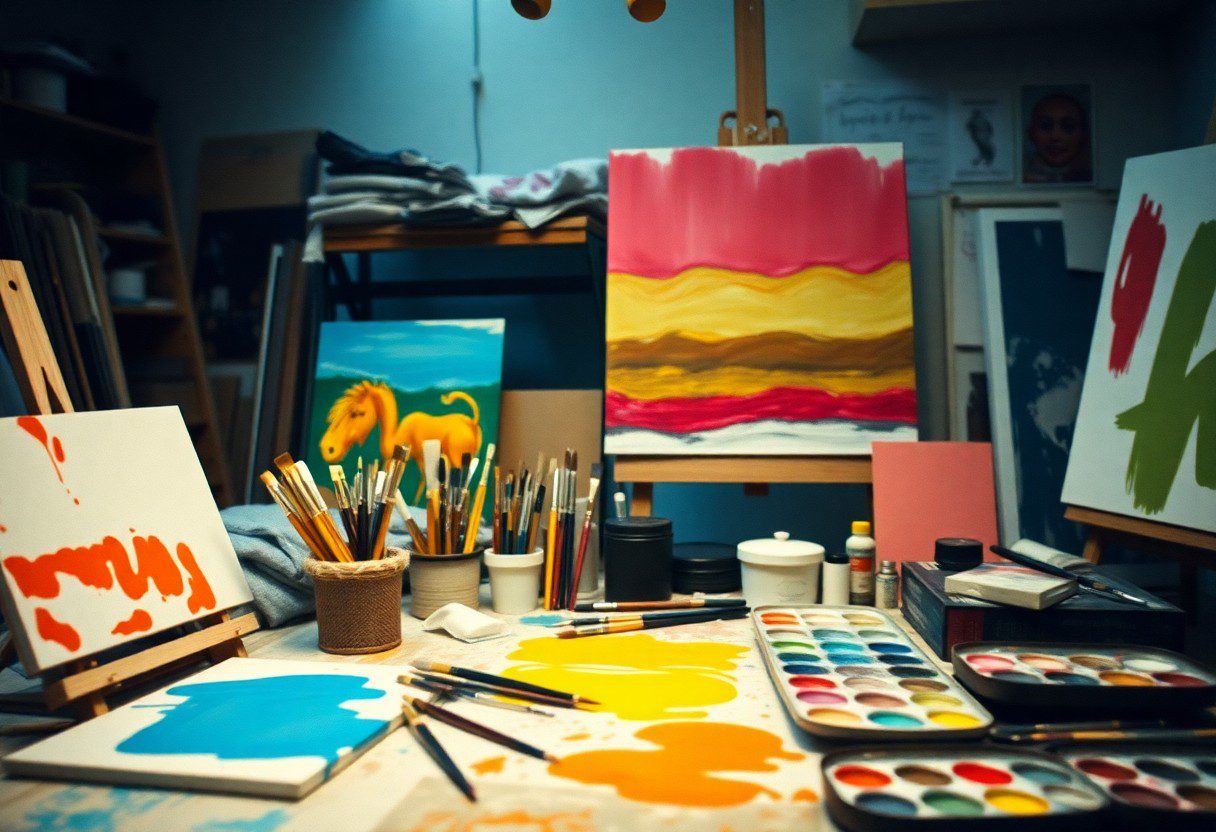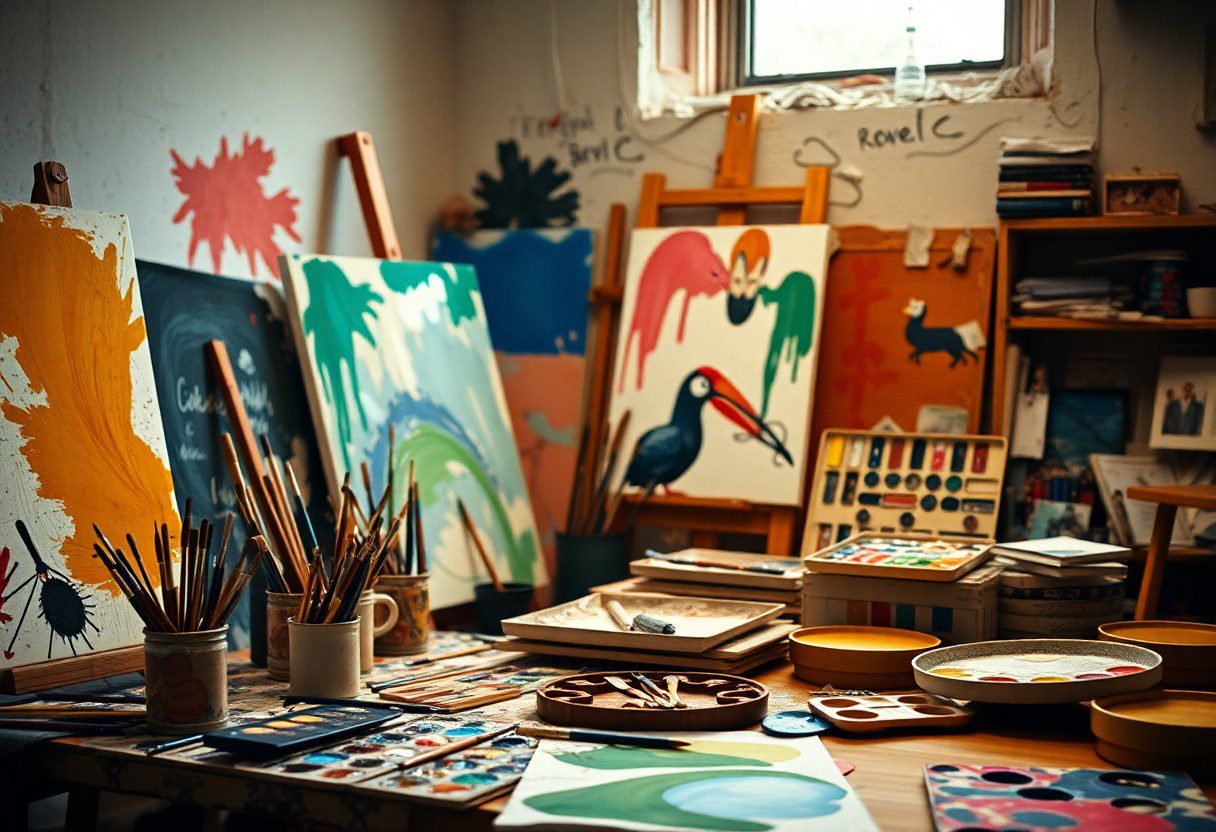Layering is an imperative technique that can transform your paintings into captivating works of art. By carefully applying multiple translucent layers of paint, you can create rich textures and depth that draw the viewer in. As you experiment with color variations and opacity levels, you’ll discover how to enhance light and shadow, giving your artwork a more dynamic and lifelike quality. This blog post will guide you through various layering techniques, empowering you to elevate your painting skills and achieve stunning visual effects.
Understanding Layering Techniques
Your understanding of layering techniques is necessary for adding depth and complexity to your artwork. By building layers progressively, you can create a rich visual narrative that engages viewers on multiple levels. This chapter will equip you with the foundation needed to explore various layering methods, allowing for greater expression in your painting practice.
The Importance of Layers
Layers are the backbone of dynamic paintings, contributing to both texture and color depth. They enable you to refine details, enhance lighting, and introduce subtle tonal variations. With every new layer, you can alter the mood and impact of your artwork. This technique is integral to achieving a polished and professional finish in your pieces.
Types of Layering Techniques
Among the various layering techniques, each offers unique opportunities for artistic expression. Here are the primary methods you can experiment with:
| Glazing | Applying transparent layers to create depth |
| Impasto | Using thick paint to build up texture |
| Scumbling | Brushing a thin layer of opaque paint over dry paint |
| Washing | Applying diluted paint for a subtle effect |
| Underpainting | Creating a monochromatic base layer |
Recognizing these techniques will empower you to choose the best approach for your creative vision while enhancing your technical skills.
Consequently, delving deeper into layering techniques reveals how each method can serve a distinct purpose in your artwork. Here is a brief elaboration on the primary techniques:
| Glazing | Ideal for creating luminous effects while allowing previous layers to shine through. |
| Impasto | Adds drama and tactility to art, creating focal points through raised paint. |
| Scumbling | Perfect for softening edges and creating a sense of atmosphere. |
| Washing | Effective for backgrounds and subtle transitions of color. |
| Underpainting | Sets a tonal foundation, guiding the composition of subsequent layers. |
Recognizing the strengths of these techniques can elevate your painting practice, granting your artwork enhanced creativity, depth, and emotional resonance.
Preparing Your Canvas
Any successful painting starts with a well-prepared canvas. Proper preparation not only enhances the final outcome but also ensures that your layers adhere correctly, allowing for smooth blending and depth in your artwork. Investing time in this fundamental step will pay off, resulting in a stronger and more vibrant composition.
Choosing the Right Surface
Right from the start, selecting the appropriate surface for your painting is imperative. Whether you opt for cotton canvas, linen, or wood panels, each material offers unique textures and absorbency levels that will impact your layering process. Consider the style and medium you plan to use, ensuring that your choice complements your artistic vision.
Prepping for Layering
With a solid surface selected, you must prep it adequately for layering. This involves cleaning, priming, and possibly toning the canvas, setting the stage for your paints to flourish. Skipping this step can lead to unexpected issues like paint flaking or uneven absorption.
The process of prepping your canvas not only saves you headaches down the line but also dramatically affects your work’s longevity. Start by applying a high-quality primer to create a consistent foundation and achieve better paint adhesion. You might also want to lay down a tonal underpainting to establish shadows and highlights, adding depth to your layers from the start. Ensure the surface is smoothly sanded to avoid any rough texture; this way, when you apply subsequent layers, your paint glides effortlessly, allowing your true artistic vision to shine through.
Color Theory in Layering
Some artists underestimate the importance of color theory in layering techniques. Understanding how different colors interact allows you to create a harmonious composition that adds depth and vibrancy to your paintings. By applying layering methods thoughtfully, you can achieve stunning visual effects that enhance your overall artwork.
Understanding Color Relationships
Before you begin layering, it’s vital to grasp the fundamentals of color relationships, such as complementary, analogous, and triadic colors. These relationships guide your choices and help you create visual balance and unity in your work. By applying this knowledge, you can enhance the depth of your paintings, ensuring they resonate with viewers.
The Role of Transparency and Opacity
Above all, the level of transparency and opacity in your paints greatly influences the final outcome of your layers. Understanding how to manipulate these properties allows you to build complex color interactions and creates a sense of depth in your artwork.
Color transparency and opacity play significant roles in layering techniques. Transparent colors can allow the underlying layers to show through, leading to a more complex, luminous effect. This layering can create subtle shifts in hue and temperature, enhancing the overall richness of your work. On the other hand, opaque colors provide more coverage and impact, which can bring bold definition to specific areas. Balancing these two elements helps you construct a captivating visual narrative while ensuring that each layer contributes meaningfully to the final piece.
Brushwork and Application
Not every stroke follows the same path; the unique character of your brushwork can create visual interest and depth in your paintings. Experiment with different brushes, such as bristle or soft synthetics, to achieve varying textures. The way you apply the paint—whether through gentle strokes, bold sweeps, or stippling—can transform the narrative of your artwork, enriching its visual language and inviting viewers to explore its layers.
Tools for Layering
On your quest for depth, selecting the right tools is crucial. Invest in a variety of brushes, palette knives, and mediums that suit your painting style. A range of brush sizes allows you to manipulate paint precisely in various areas. Palette knives can add bold textures, while mediums enhance the paint’s flow and drying time, giving you flexibility as you build layers.
Techniques for Applying Layers
Tools are only half the equation; the way you apply your layers matters significantly. Start by establishing a solid base layer and gradually build upon it, using techniques like glazing, scumbling, or impasto to manipulate the paint’s appearance. Each method introduces its signature effect—glazing creates luminous depth, while impasto adds physicality and dimension. Vary the thickness and opacity of your layers to achieve a diverse range of textures and effects. This journey of exploration allows you to engage with your canvas on a deeper level, ultimately enriching your artwork.
Hence, the choice of techniques will depend on the effect you wish to achieve. Glazing, for example, requires thin, transparent layers that enhance luminosity, while scumbling involves applying lighter, opaque tones over dried layers for a dynamic texture. Embrace the warm or cool undertones of each layer, and let outcomes unfold as you interact with the paint. Vary your pressure and brush angle to yield rich results, and don’t shy away from incorporating unexpected elements—your process is as valuable as the final artwork, leading to discovery and evolution in your painting technique.
Building Depth with Texture
Unlike flat painting techniques that create a singular visual experience, layering texture introduces a tactile quality to your artworks, enhancing the viewer’s immersion. By integrating various textural elements, you can evoke emotions and convey the atmosphere of your piece, transforming a simple scene into a rich, multidimensional landscape. Embrace the diverse possibilities that textured layers offer, allowing your paintings to resonate on multiple sensory levels.
Creating Textured Layers
An effective way to create textured layers is through the application of materials such as gels, pastes, or modeling compounds. These mediums allow you to experiment with diverse techniques, like palette knife application or stippling, to add physical depth. The interplay between light and shadow on textured surfaces not only captures attention but also creates a sense of movement within your painting.
Using Mixed Media for Depth
Above all, incorporating mixed media into your paintings can significantly enhance depth and intrigue. By combining traditional paint with other materials such as paper, fabric, or found objects, you can build a rich narrative that engages your audience.
Plus, using mixed media gives your artworks a distinctive character that traditional methods may lack. When you layer different materials, you create visual interests and heighten the overall sensory experience. The contrast of textures—from the smoothness of paint to the roughness of added elements—invites exploration and encourages viewers to look closer. However, stay mindful of overcomplication; balance is key in maintaining a harmonious composition that welcomes the eye without overwhelming it.
Layering in Different Styles
All artists have their own approach to layering, and understanding how it applies to various styles can significantly enhance your work. Whether you favor the meticulous detail of realism or the expressive freedom of abstract art, layering allows you to build complexity and emotion in your paintings. By examining these differing methodologies, you can choose techniques that resonate with your artistic vision.
Realism vs. Abstract
On the surface, realism and abstract painting may seem worlds apart, yet both can benefit greatly from layering techniques. Realists utilize layering to create depth and texture, closely mimicking the complexity of real life. In contrast, abstract artists often layer to explore emotional depth and convey ideas, inviting the viewer to interpret meaning through color and form.
Incorporating Layering in Various Mediums
Any medium you choose offers unique opportunities for layering that can transform your artwork. From acrylics to oils, watercolors to pastels, understanding how to manipulate each medium will allow you to push the boundaries of your creativity.
Layering in your chosen medium can add immense depth and dimension to your art. For example, using acrylics, you can achieve quick-drying layers that allow for rapid experimentation, while oils offer the ability to blend and create rich textures. Watercolors may require you to build up translucent layers for luminosity, emphasizing the light and flow of your work. By mastering how to layer effectively, you will enhance the overall impact of your compositions, bringing your unique vision to life.
Final Words
Drawing together the various layering techniques discussed, you can enhance the depth and richness of your paintings. By experimenting with different mediums and approaches, you’ll discover how each layer contributes to the overall composition and texture. Allow your creativity to guide you, embracing the process as you build upon your skills. With practice and patience, you’ll find that layering can transform your artistic expression and bring your vision to life.
FAQ
Q: What are layering techniques in painting?
A: Layering techniques in painting involve applying multiple coats of paint on top of each other to create depth, texture, and richness in a piece. This approach allows artists to build complexity and interaction between colors, helping to achieve a more dynamic and visually appealing artwork. By applying thin layers, you can gradually develop tones and details in your work.
Q: How can I start using layering techniques in my artwork?
A: To start using layering techniques, begin with a basic painting idea or outline. Use a transparent wash of paint as your first layer to establish an underpainting. Gradually add more layers, allowing each one to dry before adding the next. Experiment with different mediums and colors, and practice varying the thickness and opacity of your layers to see how it affects the overall look of your painting.
Q: What materials work best for layering techniques?
A: The best materials for layering techniques typically include acrylic or oil paints, as these allow for smoother application and better blending of colors. Additionally, using mediums like glazing or retarders can help maintain the clarity of color between layers. Surfaces such as canvas, wood panels, or even thick watercolor paper work well for layering, as they can withstand the application of multiple paint layers.
Q: How do I avoid muddy colors when layering paint?
A: To avoid muddy colors while layering, ensure that each layer is allowed to dry completely before applying the next one. Additionally, use a limited color palette and be mindful of color mixing; combining too many colors can dull the vibrancy of your artwork. Consider using glazing techniques, where you apply transparent layers over dried paint, allowing the colors beneath to show through while keeping the overall palette harmonious.
Q: Can layering techniques be used in all painting styles?
A: Yes, layering techniques can be adapted for various painting styles, including realism, impressionism, and abstract art. Each style may utilize layering differently—realism might focus on detailed, thin layers for depth, while abstract art might embrace bolder contrasts and textures created through layering. Exploring different methods of layering can enhance your personal style and contribute to a more impactful visual narrative in your paintings.
